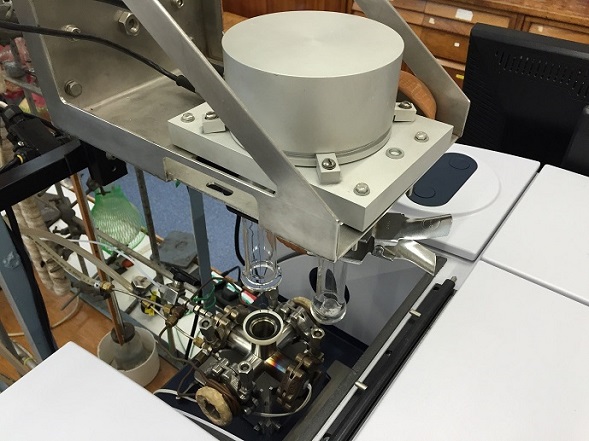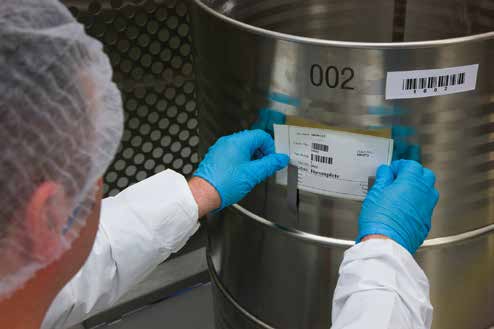 Back to news
Back to news
Researchers at the University of Aberdeen use CI Microbalances for a wide variety of applications
Researchers in both the School of Engineering and the School of Natural & Computing Sciences at the University of Aberdeen have been working with CI Microbalances for around 20 years. Prof James Anderson, head of the Surface Chemistry & Catalysis Group, supervises students from both this group and the Materials & Chemical Engineering Research Group. Three microbalances, located in the Surface Chemistry & Catalysis group laboratory, are used by PDRAs, PhD Students, visiting research students (Erasmus), undergraduate (BSc), postgraduate (MChem) researchers and previous PhD students. Current PhD Student Greg A. Mutch writes: Our research focuses on chemical engineering, surface chemistry and catalysis. Typically we couple microbalances to high vacuum/high temperature equipment and FTIR spectrometers to perform gravimetric analysis and in-situ quantitative spectroscopy in the presence of reactive gases, probe molecules or reactants. In the past we have studied a wide range of catalytic reactions, typically looking at acid sites on the surfaces of oxides, but currently we have three major projects that use the microbalance rigs.- Quantification of carbonation extent and diffusion rates in calcium loopingapplications for climate change mitigation through carbon capture.
- Determination of absorption coefficients to affect quantitative spectroscopic investigation of the catalytic reactions.
- Investigation of the water adsorption capacity of metal-organic frameworks (MOF’s).
- “Quantitative determination of surface species and adsorption sites using Infrared spectroscopy” Catalysis Today 259 (2015) p19-26, doi:10.1016/j.cattod.2015.03.039 We have published original research articles using data obtained from the microbalances:
- “Quantitative determination of acid sites on silica-alumina” Applied Catalysis A: General 390 (2010) p127-134 doi:10.1016/j.apcata.2010.10.001
- “On determination of acid site densities on sulphated oxides” Catalysis Letters 83 (2002) p59-63 doi:10.1023/A:1020657515516
- “Modification of the acid properties of silica-zirconica aerogels by in situ and ex situ sulfation” 210 (2002) p218-228 doi:10.1006/jcat.2002.3656
- “Influence of Si/Zr ratio on the formation of surface acidity in silica-zirconia aerogels” Journal of Catalysis 192 (2000) p344-354 doi:10.1006/jcat.2000.2850
“The ease of integration with other equipment is a real advantage for us as we often look to study materials under harsh conditions, at high temperature, under vacuum and in the confines of FTIR spectrometers.”Regarding technical support from CI Precision, he says,
“On the odd occasion we have had to call for support the staff have been very friendly – particularly a certain Martyn Wright!”Asked whether he would recommend CI Microbalances to others, he replied,
“Yes, we find them useful, reliable and of wide potential application. Quantification of FTIR spectroscopy is at the forefront of the application of the technique, without microbalances we would not be able to perform these measurements.”For more information about CI Microbalances, thermo-gravimetric kits and accessories from CI Precision, or to discuss your specific application, please telephone +44 (0) 1722 424100, or e-mail sales@ciprecision.com
descargar como pdf
Download PDF


